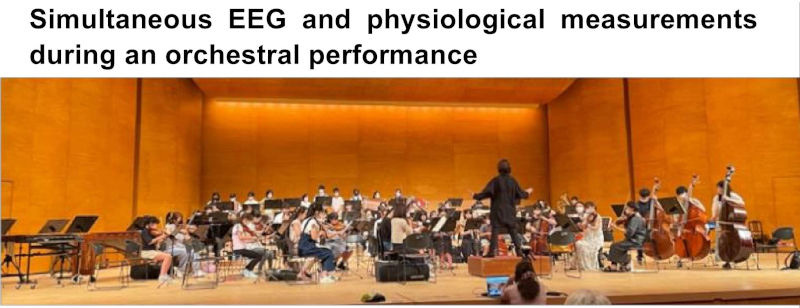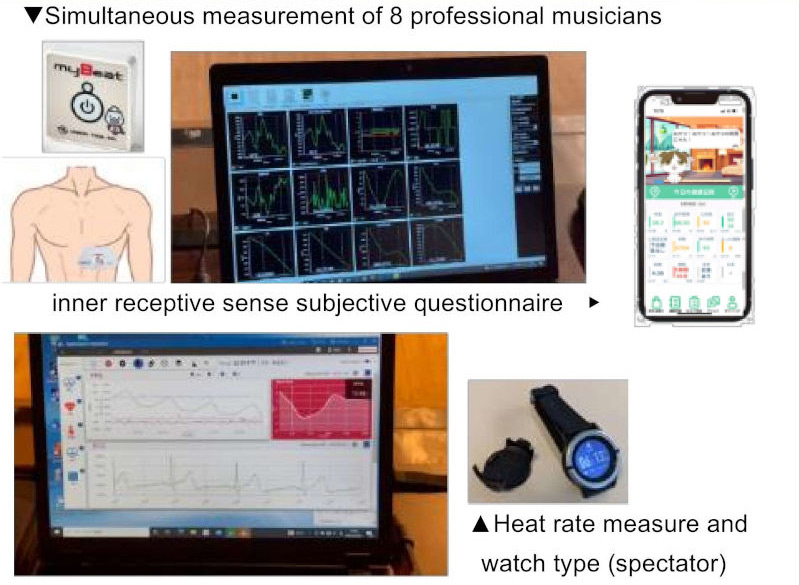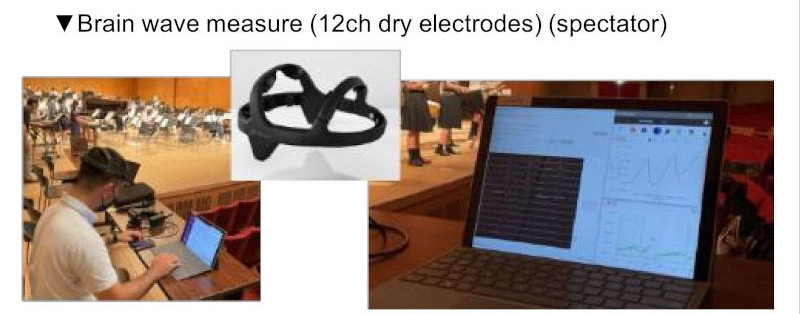Progress Report
Innovation in “Mental Capital” through Awareness Music and creation of new liberal arts2. Construction and social implementation of a research platform for Music and KANSEI Brain Science Research for all citizens
Progress through FY2022
1. Overview
In this study, our objective is to establish a Music and KANSEI Brain Science Research Platform (MKOS) that engages citizens of all age groups, ranging from children to adults. Our aim is to develop a foundation for Music Edutainment, allowing individuals to actively participate in KANSEI Brain Science research while enjoying the process. We also conduct active open discussions with the participants. The feasibility study investigates the impact of music on the brain's interoceptive sensory network (BIN) and aspires to create a Music Edutainment research program that facilitates everyone's appreciation of the effect on sensitivity and BIN.
2. Achievements as of FY2022
【MKOS construction and bio instrumentation feasibility study】
In July 2022, with the cooperation of public facilities, we organized a music workshop (WS) that involved approximately 100 local junior high school students, high school students, university students, working adults, and professional and amateur musicians. About 200 spectators also participated. Biometric measurements on conductors and musicians during concerts showed an elevation in heart rate and synchronization of heartbeats among musicians during performances.

In addition, a survey of the inner receptive sense subjective questionnaire was conducted through the application. Before and after the performance, we obtained answers from the performers and audience members. The performers provided feedback on operability, question content, and when to use it.



【Music Edutainment foundation model construction】
In October 2022, teachers, performers, and dancers underwent joint experiences involving ultra-high frequencies alongside principal investigators (PI) Honda, Sasaoka, and Machizawa. Biometric measurements were performed during these sessions. Furthermore, to address environmental noise when measuring electroencephalogram (EEG) outside the laboratory, we utilized an electromagnetic noise measuring device to perform measurements at the venue, confirming that there are no major issues with brain wave measurements. Additionally, to create teaching materials for future Music Edutainment, we measured the ultra-high frequencies produced by each musical instrument during play.
【Co-creation research with other PMs and PIs】
In December 2022, in collaboration with Yamaha Corporation, we conducted a survey on differences in reverberation effects during performances and listening, involving 10 performers and 6 audience members (performers after the performance and music educators). We collected data to create a new subjective psychology questionnaire. Biometric measurements revealed changes in heart rate during performances due to reverberation, while the employment of the BPQ very short form enabled the observation of emotional variations in the audience. Furthermore, the subjective psychology questionnaire disclosed emotional changes, both positive and negative, following the musical experience.
3. Future Developments
To expand the scope of WSs, we are fostering collaboration with the board of education, schools, and local communities. Furthermore, by broadly disseminating information about MS9 activities and increasing participants with various backgrounds, we endeavor to promote the realization of more diverse and large-scale projects. We also aspire to link the research findings to music therapy, enabling the inclusion of music therapy as a preventive measure for mental and physical health within compulsory education music classes. By incorporating scientific elements into the traditional knowledge of music therapy and accommodating it to diverse sensibilities, we aim to realize a mentally healthy and dynamic society for everyone.
(NISHIMOTO Tomomi, Hiroshima University).